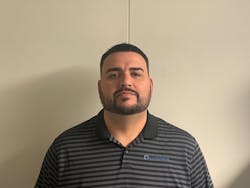Monitoring Centers Survive and Thrive Despite the Pandemic
This article originally appeared as the cover story in the May 2021 issue of Security Business magazine. When sharing, don’t forget to mention Security Business magazine on LinkedIn and @SecBusinessMag on Twitter.
The pandemic left many global businesses facing years to recover – if they ever do; however, the security industry performed relatively well. The Security Business State of the Industry Report in December found more than 70 percent of integrators, installers, consultants and others in the sector reported 2020 gross margins equal to or greater than non-pandemic 2019.
For monitoring centers, the results are similar. According to a November 2020 international survey of video monitoring station executives by monitoring software provider Calipsa, just 16% of monitoring operations across 15 countries reported reduced revenue over the previous 12 months.
“The majority of businesses in our survey weathered the storm by providing vital services and by employing the latest technology to get the job done better and quicker than before,” says Brian Baker, VP Americas for the provider of deep-learning powered video analytics for false alarm reduction. “The outlook looks positive for 2021.”
What makes the security industry and monitoring centers more resistant to an extraordinary worldwide economic crisis? Security Business caught up with four North American monitoring center executives, who shared their opinions on issues ranging from COVID-19 to false alarms.
The Panel
Aleksei Bulavko is research, development and production manager for Radius Security, which provides monitoring services across Canada and the Dallas-FortDaniel Grajeda is chief operating officer for Houston-based Eyeforce Remote Guarding Solutions, a national company with a Houston-based command center and a redundant monitoring station in Tyler, Texas.
Holly Shenk is SVP of client solutions for Pittsburgh-based Edgeworth Security, which provides remote video monitoring, executive protection and systems integration to clients in the U.S., Canada and British Virgin Islands.
Michael Zatulov is Chief Operating Officer for Los Angeles-based Elite Interactive Solutions, which operates in 18 states with branch offices in San Francisco and Chicago.
Security Business: How did your business fare in 2020 and why?
Bulavko: Security is considered an essential service, so we did not have any downtime and achieved our goals. I would estimate our revenues grew by 10 toZatulov: Our business has seen double-digit growth in 2020 as compared to previous years. One reason is due to the status quo of traditional guard companies that are currently overwhelmed due to staffing restrictions and COVID complications related to manned guard forces. Our monitoring solutions provide security beyond what the typical guard can accomplish at a more reasonable cost. We saw growth coming from increased crime rates in our key market verticals and increased needs from commercial customers for protection of people and assets from crime and catastrophe.
Grajeda: I don’t know that I could put an exact number on our revenue, but we saw growth; however, this uptick in business is for all the wrong reasons. There are many people out of work, and unfortunately, some of them turned to theft. Also, some of our customers experienced layoffs or reduced hours, leaving their sites less protected. New customers requested service and existing customers asked for additional hours of monitoring.
Shenk: The pandemic had an impact on us, but we did see growth. New and existing customers were motivated by opportunities to optimize their security investment while seeking ways to lower their costs.
Were employees able to work from home?
Shenk: We have many clients and a UL listing that demands a brick-and-mortar presence. Our value proposition to our customers is that the person watching your business or home is not texting or otherwise distracted. Within our command center, anything that happens on a customer’s site is seen by multiple people. You have to control the work environment and guarantee your customer that nothing will happen to their people and assets.
Grajeda: Although we had a ton of concerns, we let people work remotely. We walked through the process step-by-step, including investments in equipment and internet connections. We designed metrics to measure workflow and did not see a drop-off in production. Our team delivered in a big way.
Zatulov: Our critical infrastructure for security has multiple redundancies and allows us the ability to safely adjust staffing in times of crisis. As our operation relies on machine learning and AI algorithms provided by companies like Calipsa, the reliance on a large staff at the command center is mitigated and provides more flexibility and social distancing for our staff. While a small group does remain in the command center 24/7, we have allowed employees in non-critical departments to work from home.
How did you protect those working from a command center?
Bulavko: Our command center environment enabled us to maintain social distancing of six feet between operators. We installed plexiglass barriers between stations and provided operators with personal protective equipment such as masks and gloves. We were happy to see how quickly our operators adjusted to any changes and follow the best practices we outlined.
Zatulov: Due to our lean operations, we were able to spread people out to follow strict protocol and safe social distancing. We also leased some adjacent space to separate command center agents from our service and installation departments to restrict inter-departmental contact.
Are any of the changes forced by the pandemic likely to become permanent in the monitoring industry?
Grajeda: I am excited about remote access (for employees), and we have seen more content employees. Some who met our metrics have asked to continueShenk: We will keep up some of the changes, especially in maintaining hygiene within the workspace. There is always disease – flu, colds – and it helps maintain the health of our workforce.
Bulavko: The protective equipment and social distancing are here to stay. I am not sure there will be a need to continue working from home, and some of our customers that requested extended monitoring hours are already cutting back.
With false alarms a notorious problem for the monitoring industry, how do you handle them?
Zatulov: Our main differentiator is that we have zero false alarms; in fact, we are the proud recipients of the prestigious 2020 Police Dispatch Quality Award. The only way we were able to achieve that is by having our technology do most of the heavy lifting. Elite depends on several critical technologies, such as Viakoo and Calipsa, to make sure that our cameras are up and running and able to catch criminal activity.
Grajeda: For far too long, security has been based on very blunt instruments, such as motion detectors, beams and door and window sensors. The next step in the evolution of monitoring was adding cameras; but they are only as good as the people watching them. That leads us to where we are today with the introduction of artificial intelligence-based video analytics. Video analytics puts a fine point on video monitoring/security as a service. Instead of wading through thousands of false alarms, you wait for the few true alarms. This is at the core of our business – if there is anybody in this business not using analytics, they are behind the times. I have been in this business for 10 years and the technology has jumped generations.
Shenk: We use several methods involving hardware, software and analytics. When we deploy a false alarm reduction method, we review removed alarms toBulavko: A cloud-based false alarm reduction platform using artificial intelligence enables our operators to focus more on what matters to our customers. Too often, it seemed we were hiring an operator to handle false alarms, not to provide more service. We also use edge analytics on our cameras. If you are careful to adjust the analytics properly and apply the rules, a camera will send fewer events to the cloud for review.
What advice would you give other monitoring center operators based on what you learned in a turbulent 2020?
Zatulov: Work closely with your local police departments. The law enforcement and first responder communities are stretched very thin, to say the least, during these most challenging times. It is our responsibility as support and live monitoring partners to ensure that crime is prevented, and law enforcement can safely do their job when they arrive without fear of ambush or the unknown.
Grajeda: Keep pushing for more business. Security is an industry on the rise. In 2019, many customers did not realize they needed a higher level of protection. They learned the value and importance of it in 2020. We have an opportunity to continue the growth as people see the cost of replacing equipment, doors or windows is less than paying a video monitoring service that runs off criminals or gets them arrested while keeping a site safe.
Paul Rothman is Editor-in-Chief of Security Business magazine. Access the current issue, full archives and apply for a free subscription at www.securitybusinessmag.com. Jon Daum of security-centric PR firm Daum Weigle (www.daumweigle.com) contributed to the writing of this article.
About the Author
Paul Rothman
Editor-in-Chief/Security Business
Paul Rothman is Editor-in-Chief of Security Business magazine. Email him your comments and questions at [email protected]. Access the current issue, full archives and apply for a free subscription at www.securitybusinessmag.com.








